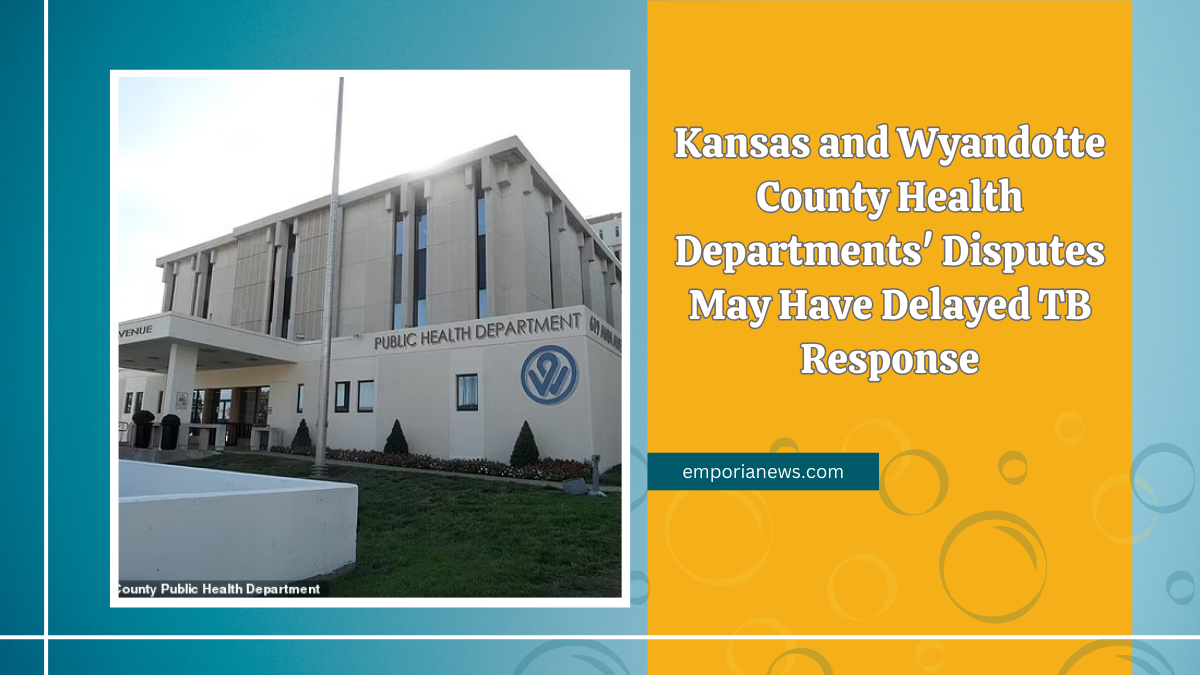The Kansas tuberculosis (TB) outbreak has posed significant public health challenges, especially in Wyandotte and Johnson counties.
- As of January 2025, the outbreak had escalated to 67 active TB cases and 79 latent infections.
- Disputes between the Kansas Department of Health and Environment (KDHE) and the Wyandotte County Public Health Department (WCPHD) led to concerns about response efficiency.
- Many believe that bureaucratic conflicts may have hindered or complicated TB containment efforts.
Escalating Tensions During the Outbreak
Emails obtained through records requests reveal rising tensions between WCPHD’s former director, Elisha Caldwell, and KDHE officials.
Conflicts arose over basic operational issues, such as:
- Allocation of office space
- Resource management
- Decision-making processes
August 2024: Caldwell objected to KDHE’s use of Wyandotte County facilities without prior approval.
Outcome: These disputes coincided with the outbreak’s escalation, with active cases reaching 67 by early 2025.
State Intervention and Its Impact
November 2024: KDHE took full control of the TB outbreak response, sidelining the local health department.
Challenges faced after state intervention:
- Patients were confused about where to seek treatment.
- Healthcare providers faced disruptions in care continuity.
- Local health officials opposed the abrupt transition, believing it disrupted established response strategies.
Dr. Allen Greiner (Wyandotte County Public Health Officer) stated:
Patients did not miss treatments but faced unnecessary challenges. The sudden change impacted families by shifting doctors and treatment locations.
Impact on Patient Care and Community Trust
- Inconsistent leadership created uncertainty, affecting community trust in health officials.
- Effective TB management requires:
- Consistent engagement with patients
- Adherence to long-term treatment protocols
- Disruptions in care can lead to:
- Patients dropping out of treatment
- Increased risk of disease spread
- Many Wyandotte County health department employees resigned due to dissatisfaction with Caldwell’s handling of the outbreak.
Current Status and Lessons Learned
- As of February 2025:
- Collaboration between local, state, and federal agencies has helped stabilize the outbreak.
- KDHE continues leading response efforts, ensuring public risk remains low.
- Key lessons from the situation:
- Better communication between agencies is necessary.
- Consistent leadership and decision-making processes must be established for future crises.
- Patient care should remain the priority, avoiding unnecessary disruptions in medical services.
Key Events in the Kansas TB Outbreak
| Date | Event |
|---|---|
| January 2024 | Initial TB cases identified in Wyandotte County. |
| August 2024 | Disputes between WCPHD and KDHE over resource allocation. |
| November 2024 | KDHE assumes control of the TB outbreak response. |
| January 2025 | Outbreak reaches 67 active cases; state emphasizes low public risk. |
| February 2025 | Collaborative efforts stabilize the outbreak situation. |
The Kansas TB outbreak underscores the importance of cohesive interagency collaboration in public health crises.
Addressing internal conflicts and ensuring unified response strategies are critical to:
- Managing outbreaks efficiently
- Minimizing public health risks
- Maintaining trust in healthcare institutions
Moving forward, health departments must prioritize communication, leadership stability, and patient-centered care to prevent future challenge
FAQs
What caused the tuberculosis outbreak in Kansas?
The exact cause remains unidentified, but close-contact living conditions and limited healthcare access likely contributed to the spread.
How did conflicts between agencies affect the response?
Disagreements over resources and leadership roles led to a state takeover, causing disruptions in patient care and public communication.
Is the general public at risk from the TB outbreak?
Health officials state that TB transmission requires prolonged close contact, so the risk to the general public remains low.




